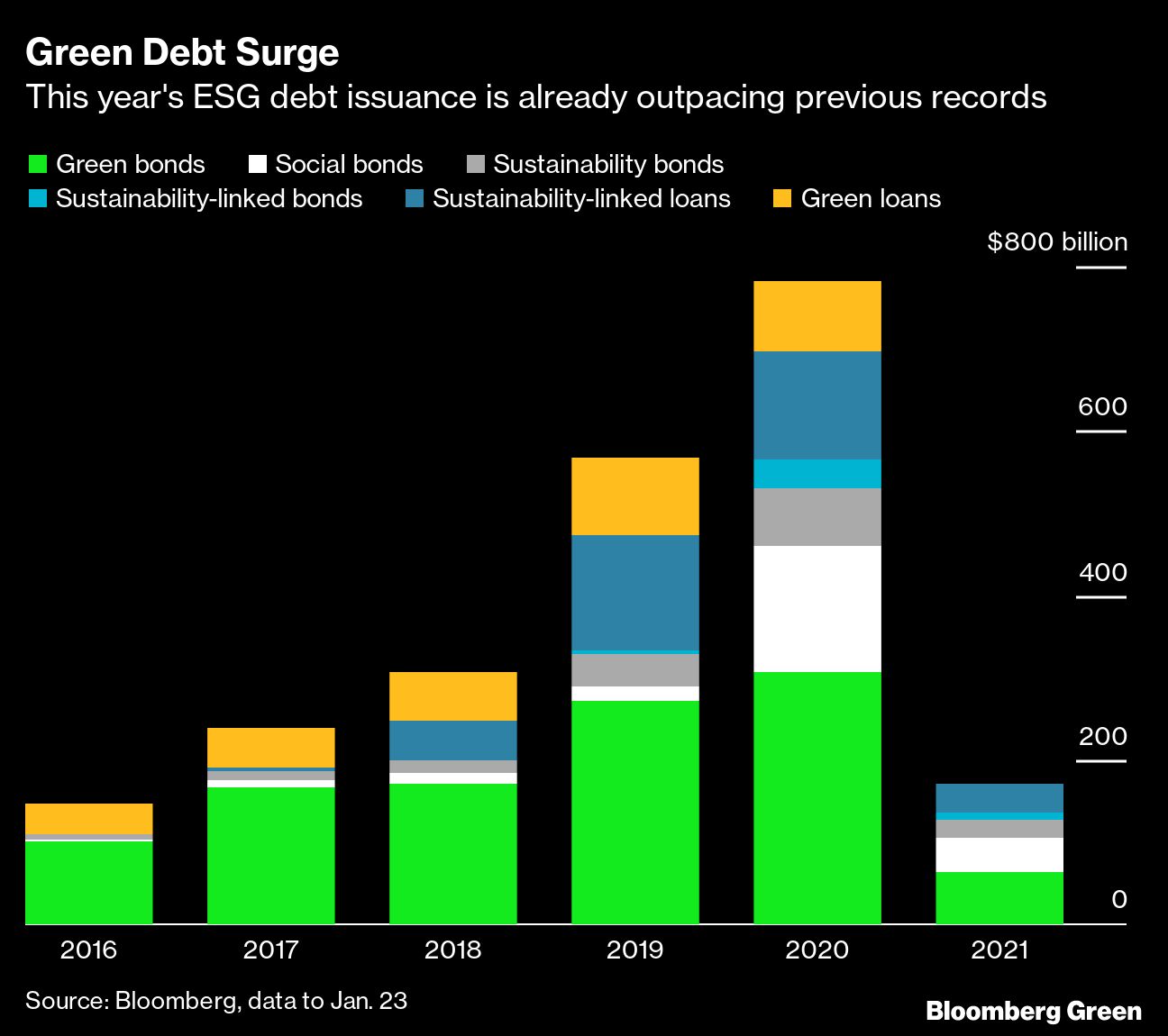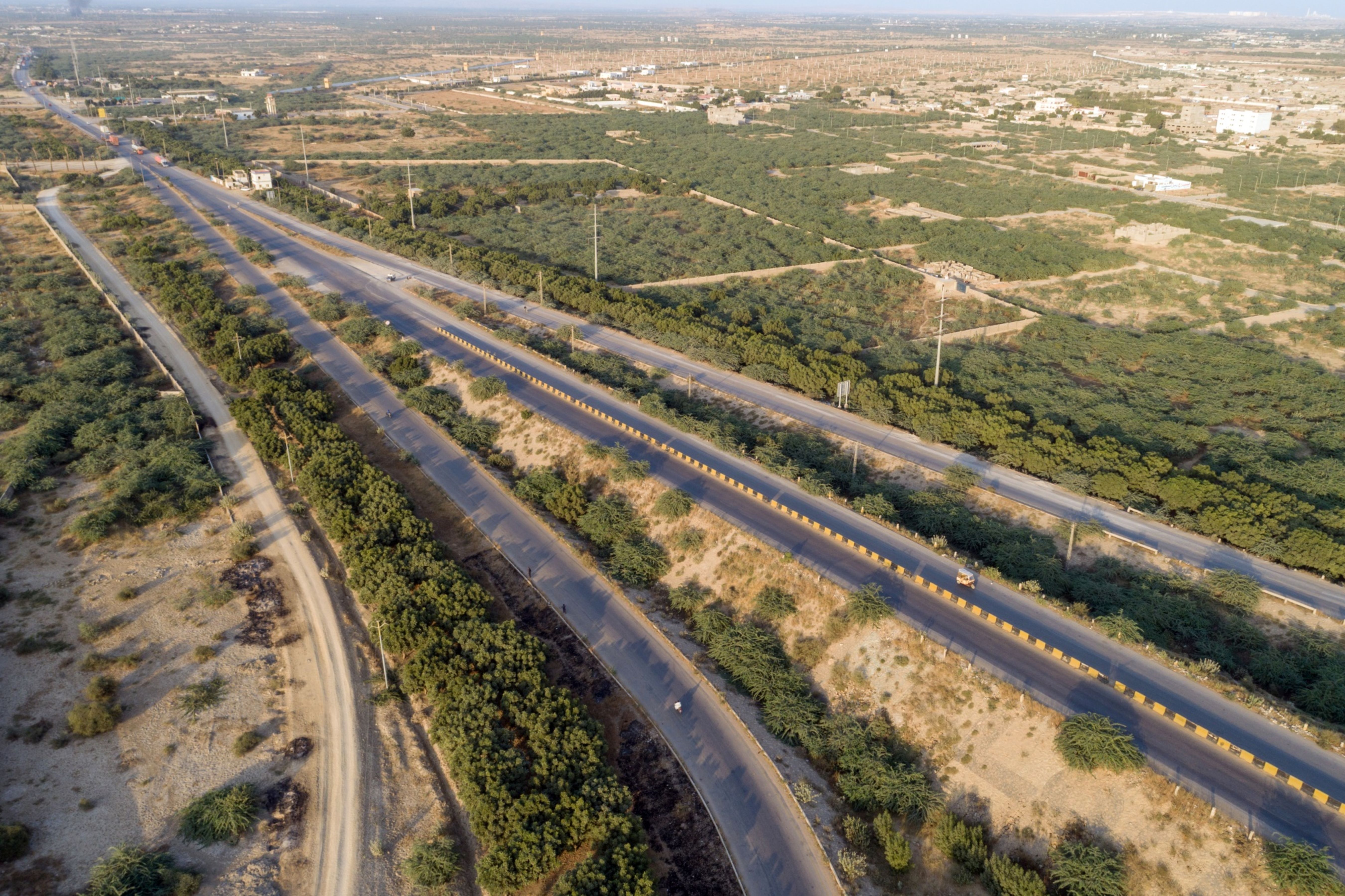(Bloomberg) —
For green finance enthusiasts, a new flavor of debt could emerge this year — nature bonds.
Sales of green bonds — which typically raise money for clean energy projects — are expected to grow by a third this year to record levels, as governments and companies look to capitalize on booming demand at the same time as bolstering their image. Yet academics and activists say this alone isn’t enough to save the planet.
They’re lobbying for securities that more explicitly protect the natural world — and are likely to get a hearing from policy makers when the United Nations meets in coming months to discuss biodiversity and climate change. Those issues are climbing up the agenda as governments decide how to spend trillions to recover from the virus.
“Sovereign bonds are obviously so important now with with the crisis response and then the economic recovery, and nature should be right at the heart of that,” said Nick Robins, a professor at the London School of Economics’ Grantham Research Institute and a former fund manager. “Nature-based solutions for climate change can be very labor-intensive, so if you’re thinking about financing a green recovery they are a really good place to prioritize your public spending.”

Countries could pay less interest on the debt if they meet environmental targets. That’s a similar approach to so-called sustainability-linked bonds for companies, which have been exploding in use this year.
Research organization Finance for Biodiversity Initiative has a framework for how such “nature-performance bonds” could operate in practice. It’s in talks together with the World Bank, the U.S., China and European countries to also potentially offer debt relief to emerging-market nations if they can green their borrowing in this manner.
| Read More: |
|---|
| First Sovereign Nature Bonds Get Lift from World Bank-Backed HubBiodiversity, Supply Chain Rank Among Biggest ESG Themes in 2021Unpriceable Climate Change Stalks $31 Trillion Debt Market |
Pakistan could be first out of the blocks to issue up to $1 billion of these so-called nature-performance bonds this year, according to Malik Amin Aslam, a climate-change adviser to Prime Minister Imran Khan. Uruguay is also exploring such bonds, its debt chief Herman Kamil said.

There are also alternative suggestions. Henry Boucher, deputy chief investment officer at Sarasin & Partners LLP, was spurred into action after the Intergovernmental Panel on Climate Change pointed to land use as accounting for a quarter of man-made greenhouse gas emissions.
Back to Eden
He’s called his proposal “Eden bonds.” His idea is for governments to issue long-term debt to buy private land and essentially pay investors interest to keep it wild. Investors could then supplement this income by selling carbon credits or credits linked to species restoration. When the bond matures, the government would pay back its debt, leaving the public sector owning the land.
“We’re getting to a point where we have very little natural-capital stock left,” said Boucher in an interview. “Why issue more debt to buy land today when you are already maxed out on issuance to pay for the pandemic? The answer is that climate change and biodiversity loss are even bigger problems.”
While the management of nature may significantly affect nations’ long-term economic outlook — an issue especially pertinent to commodity producers — so far investors have mostly focused on more conventional considerations such as debt-to-growth ratios. It’s only now that governments and credit rating agencies are looking to put a price on climate risks or opportunities.
“If Nairobi runs out of water, that has got to affect Kenya’s sovereign debt, surely?” said Martijn Wilder, co-founding partner of Pollination, whose investment arm aims to be the world’s largest manager of natural capital assets. “But people aren’t thinking about that, these are just things people don’t get. We’ve just got to recognize we’re at the start of a journey, really.”

Existing bond frameworks have already been used in some cases to preserve nature. Poland issued the first sovereign green bond in 2016, saying it would spend some of the money on natural parks. France also put biodiversity protection as one of the uses for its inaugural offering, while the Seychelles pioneered blue bonds in 2018 to support sustainable fisheries.
The topic of biodiversity — maintaining a variety of plant and animal life — will be the focus of a U.N. conference in China in May and then a theme at the next major climate change conference in November in Glasgow. It’s expected to lead to more specific targets after dozens of countries pledged last year to reverse biodiversity loss by 2030.
“We keep talking about nature as the birds that we have to protect, as the endangered species,” said Nina Seega, research director for sustainable finance at the Cambridge Institute for Sustainability Leadership, who co-authored a handbook on nature-related risks published Monday. “Whereas in all actuality, nature is crop diversity which guarantees we have food to put on our tables. Nature is the ability of bees to provide pollination services that are vital for food production.”
The issue has also been given a spur by the election of U.S. President Joe Biden, who has promised to conserve 30% of U.S. land by 2030, and by a recent U.K. government review led by Partha Dasgupta that emphasized taking into account the value of nature.
Ethical Debt Glossary: ESG, SLB, SLL, KPIs and More
As demand for environmental, social and governance assets takes off, specialist investors are keen. The risk, however, is a fragmentation of the green finance market, with so many different flavors of bonds.
“If there’s a way for sovereigns to do that in a mainstream-market way, a benchmark issuance that’s index-eligible, you can have your cake and eat it,” said Christopher Kaminker, who leads the sustainable investment team at Lombard Odier Investment Managers.(Updates with link to handbook in 15th paragraph.)© 2021 Bloomberg L.P.





